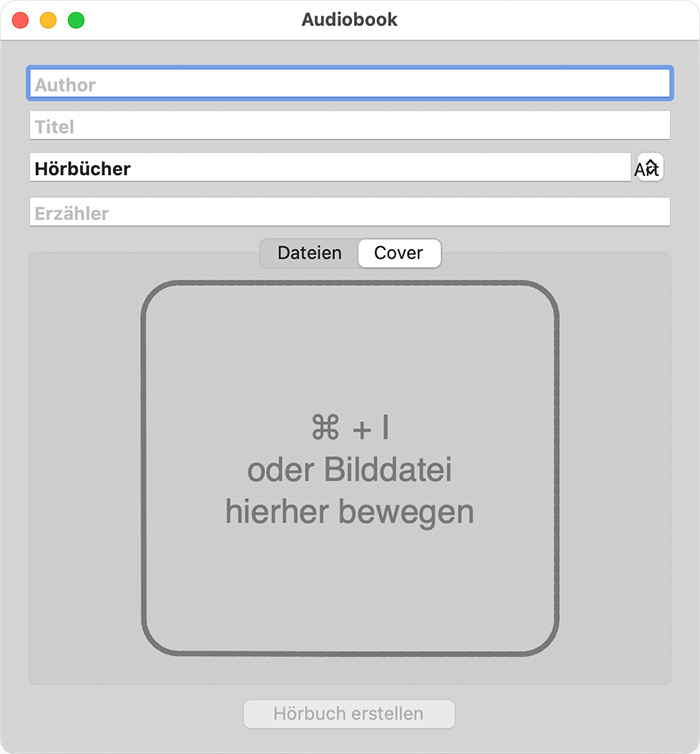

- AUDIOBOOK BINDER MAC HOW TO
- AUDIOBOOK BINDER MAC UPGRADE
- AUDIOBOOK BINDER MAC SOFTWARE
- AUDIOBOOK BINDER MAC FREE
There are three things you will need to make this work well:
AUDIOBOOK BINDER MAC HOW TO
Unfortunately one thing it does not directly support are audiobooks, even though this has been requested repeatedly all the way back to 2013, but because Plex is at it’s core Open Source there are people who have figured out a way to make use of it.įor me Plex was the easiest way to approach this because my books are already sitting on a NAS an Plex was already running there, the challenge was as to how to get them onto my phone and manage them easily.
AUDIOBOOK BINDER MAC FREE
The basic version is free and it has quite an extensive skill set.
AUDIOBOOK BINDER MAC SOFTWARE
My solution to the problem is both simple and complicated: Plex.įor those who don’t know, Plex is a media server software and player. So, the only answer is to leave the Apple eco system behind and go…. They do not want you to load your own audiobooks, they want to be the man in the middle and get their pound of flesh in the market. I was aware of this limitation back during the Beta phase and was wondering if Apple was going to fix it before the release, the answer is: No. You listen to maybe one or two books at a time and most machines have more than enough space to hold those.īecause these books are already tagged and prepped you also won’t need to modify the ID3 tags, so why would you need that functionally in the app? So what now? In both cases there is no need for you to store large amounts of books on the drive.
AUDIOBOOK BINDER MAC UPGRADE
I maybe upgrade my computer now every four years and my phone every three. The idea here is that there is predictable revenue, especially in a time where hardware sales are stagnating or falling as devices have gotten “good enough” for most people. Adobe has gone down this road, so has Microsoft and a lot of smaller developers. Both of these are subscription services and provide Apple with a continuous revenue stream. It started with the push of iCloud and the introduction of Apple Music. Phase 3: The Service CompanyĪround 2016 Apple started to enter the next phase, that of a service company. This is essentially a very large mobile device that at the end of their life will have be thrown out, just like the phone. Back in 2013 I could still replace the HDD in my MacBook, in my current one? No chance. This is also seen in the way their computers changed. With the introduction of the iPhone and iOS Apple started shifting away from the computer / desktop model and more towards a mobile device model. This period lasted essentially from the start of the company until around 2007 when Apple introduced the iPhone. In the first phase they build and sold you computers, with some software thrown in. LifetimesĪpple is currently in their “third phase” of their life. This is not configurable, and that’s fine if you only have a handful of audiobooks, but if you have a large collection you’re quickly going to run out of storage space. ~/Library/Containers//Data/Documents/iBooks It’s just stored deep within the OSs guts. The storage location for the books you have in the application is now hard coded to a location on your local drive, and not in “user space” either. While the Music.app still retains the ability to select where you want to store the files and edit the tags, for the Books app they omitted this.

So what happened?Īmong the things Apple is changing is that they have “ retired” iTunes and broke it up into distinct applications. When Appel released macOS Catalina (10.15) at the end of the September not only did they break 32-Bit applications on macOS but they also broke audiobooks on the Mac for a lot of people.


 0 kommentar(er)
0 kommentar(er)
